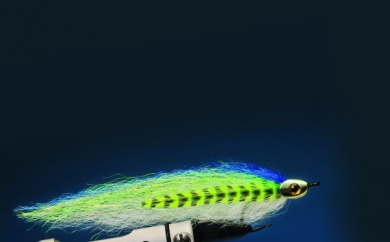
Step 1
Take a bundle of SF fibers (the width of amatch) and tie it as shown in the picture. The side that goes towards the hookbend should be longer. It should not be set past the head.
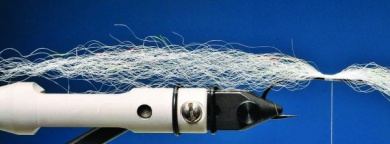
Step 2
Tie a bundle of SF fibers in the ventral part in the same way. Both white.
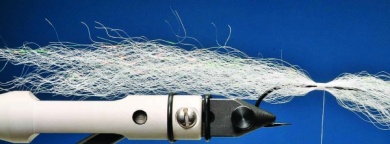
Step 3
Bend the upper bundle to the back and tie firmly. Repeat with the lower bundle, tie and cement with liquid cianoacrilate. Impregnate the thread making sure the cianoacrilate does not impregnate the material.
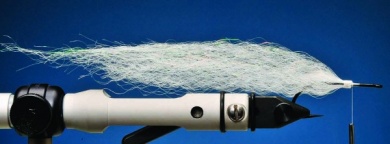
Step 4
In the same way as before, tie a bundle ofchartreuse on top and a white one below, and beck to the back. A bit more atthe front than the first ones.
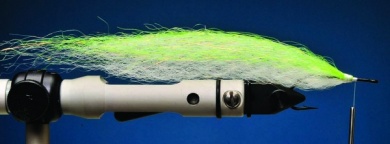
Step 5
Do the same with a blue bundle with white below.When turned to the back, every bundle should cover half the hook. Both the topand the lower bundles. This way, no gaps will appear on the body of the fly. Itis simple to bend and move this synthetic material.
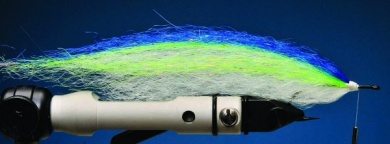
Step 6
Use a comb to untangle, and then trim, the fly.
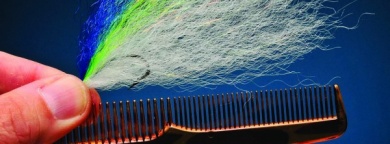
Step 7
Use long scissors to trim the fly. Check theshape of the fly seen from above. We will always get a bulky fly when tyingthis kind of patterns.
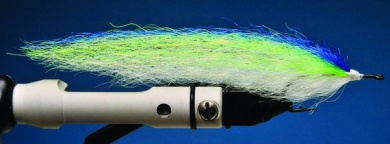
Step 8
The barred rooster feathers make the fly moreattractive, resembling other fish. We can also use permanent marker to draw thefish marks.
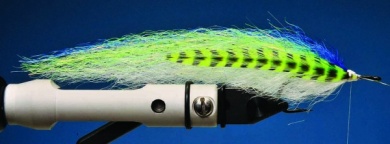
Step 9
Try the setting of the head. Some thread beforemay help to fix it tighter. Glue it with 5 minute epoxy over the thread. The threadshould be previously impregnated with cianoacrilate to avoid the fly fromturning. When the epoxy hardens, glue the eyes.
